Tender carrots cooked and glazed in carrot juice is one of the most popular side dishes I've ever put on a menu. It's easy to make at home, and cheap.
Most people know glazed carrots with orange juice, but the flavor the carrot juice is much better and doesn't turn bitter. The bright orange glaze will blow people away, without adding sugar.
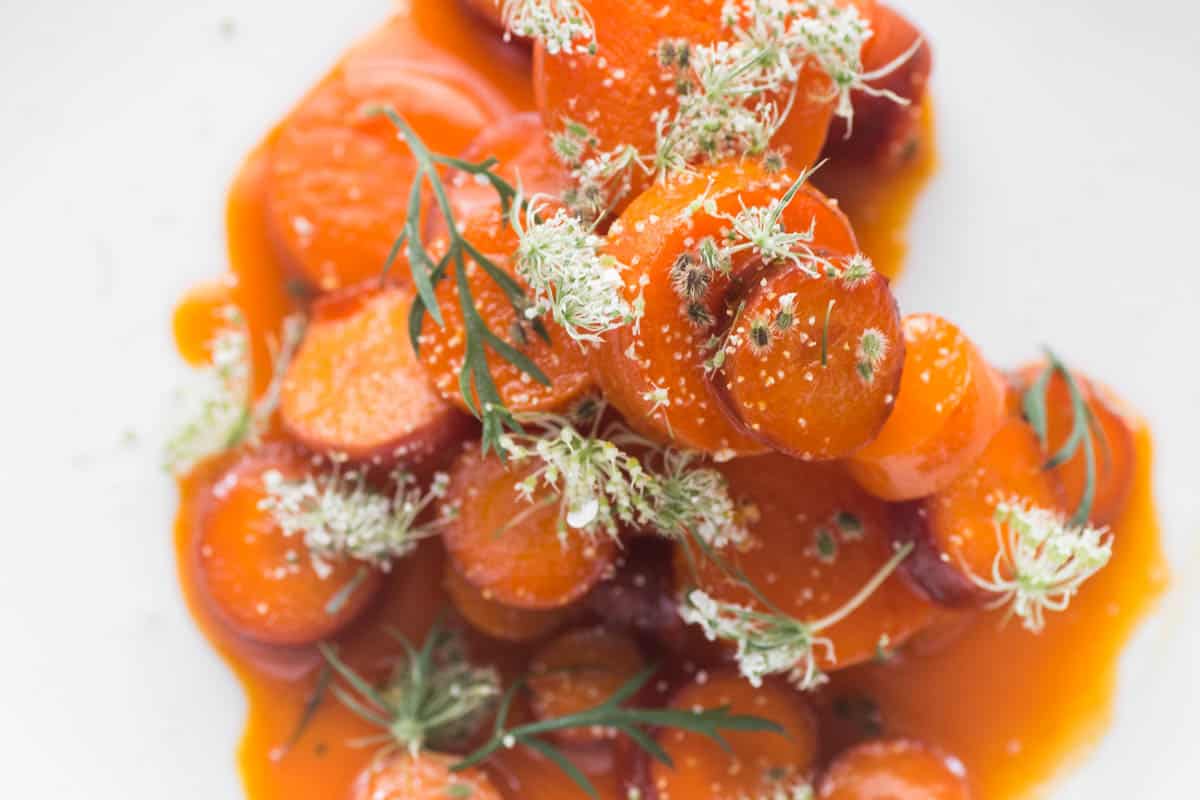
It's one of my favorite preparations for the ubiquitous orange root. I liked it so much I'm putting it on the menu this week at the restaurant while the flowers are at their peak.
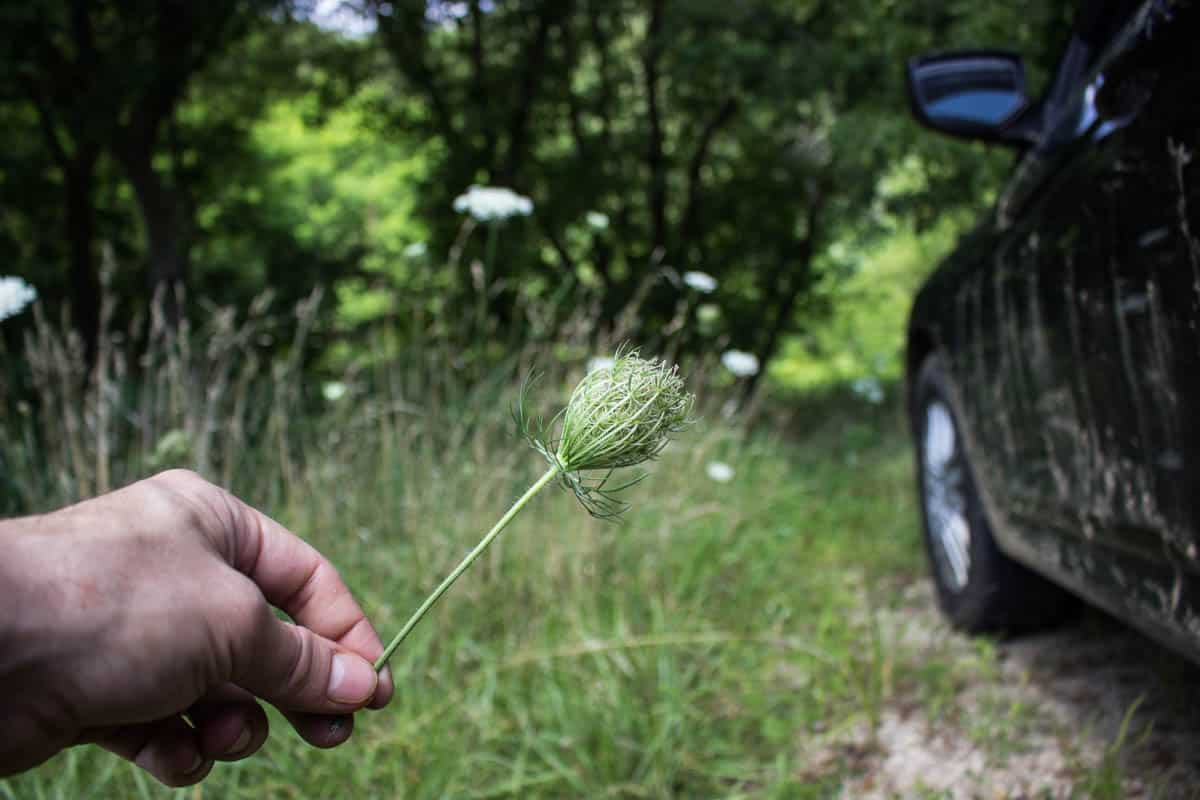
It's a study in a vegetable, and a lesson in layering flavors. Of course, you won't want to use the same method with just any vegetable but you can apply the same technique to a couple of different things, at the top of the list is beets.
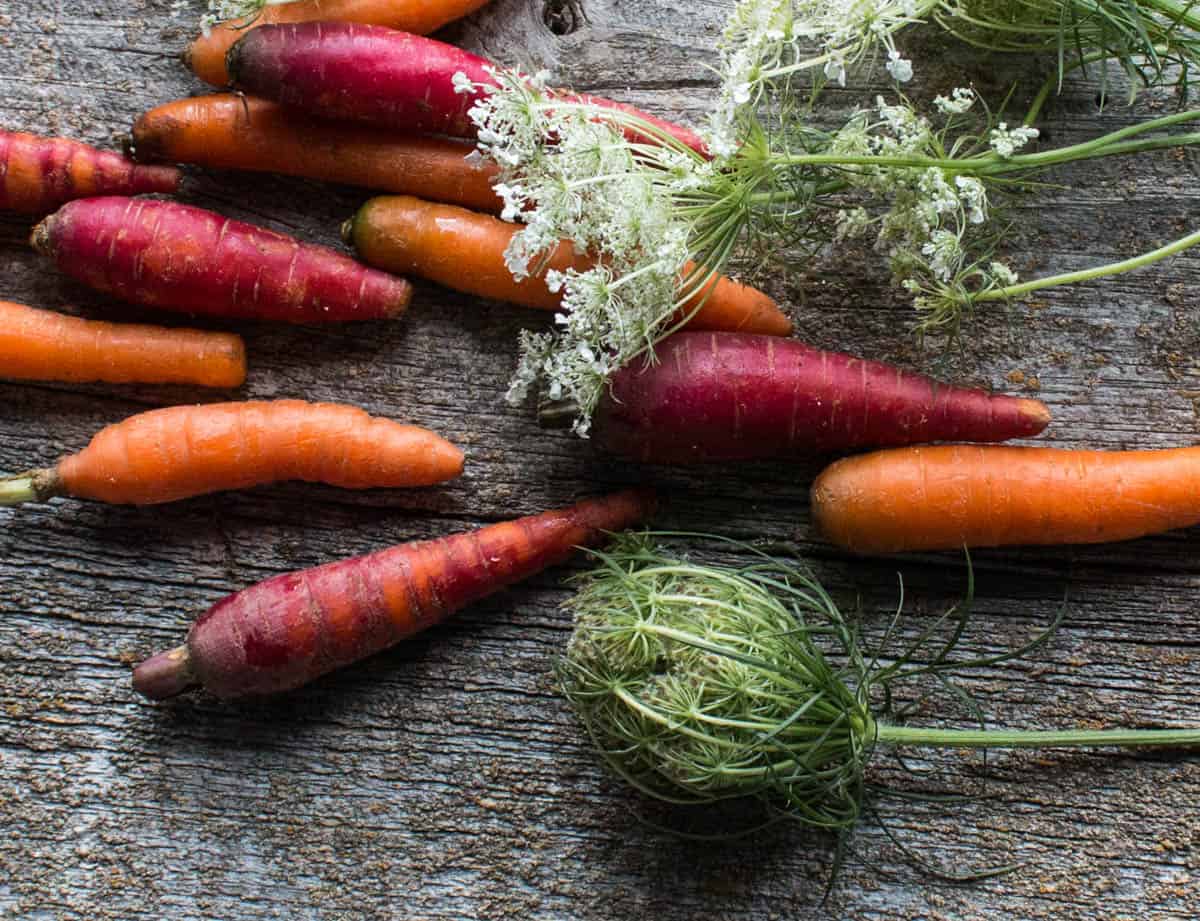
This is one of the best wild carrot recipes I know. But even if you don't pick carrot flowers, bookmark the recipe and try it out sometime.
You'll be amazed at how much concentrated carrot flavor there is, and it'll be fun to bring out the next time your craving some glazed carrots. When you throw the carrot seeds into the mix, it's like tasting the a carrot's soul.
Adding Fresh Herbs
If you don't have access to carrot seeds, consider adding chopped fresh tarragon, parsley, chives, or a combination at the end. The herbs bring it to another level.
Wild carrot seeds are an abortifacient
This is a well known side effect of eating large amounts of wild carrot seeds and other plants like angelica. If you're trying to get pregnant, maybe don't eat handfuls of them. It's fine to eat them in small amounts as pictured.
Serving
This is the perfect dish to go with chicken, pork or fish. If you like to make people laugh, you can also serve it with rabbit, especially a stuffed rabbit saddle.
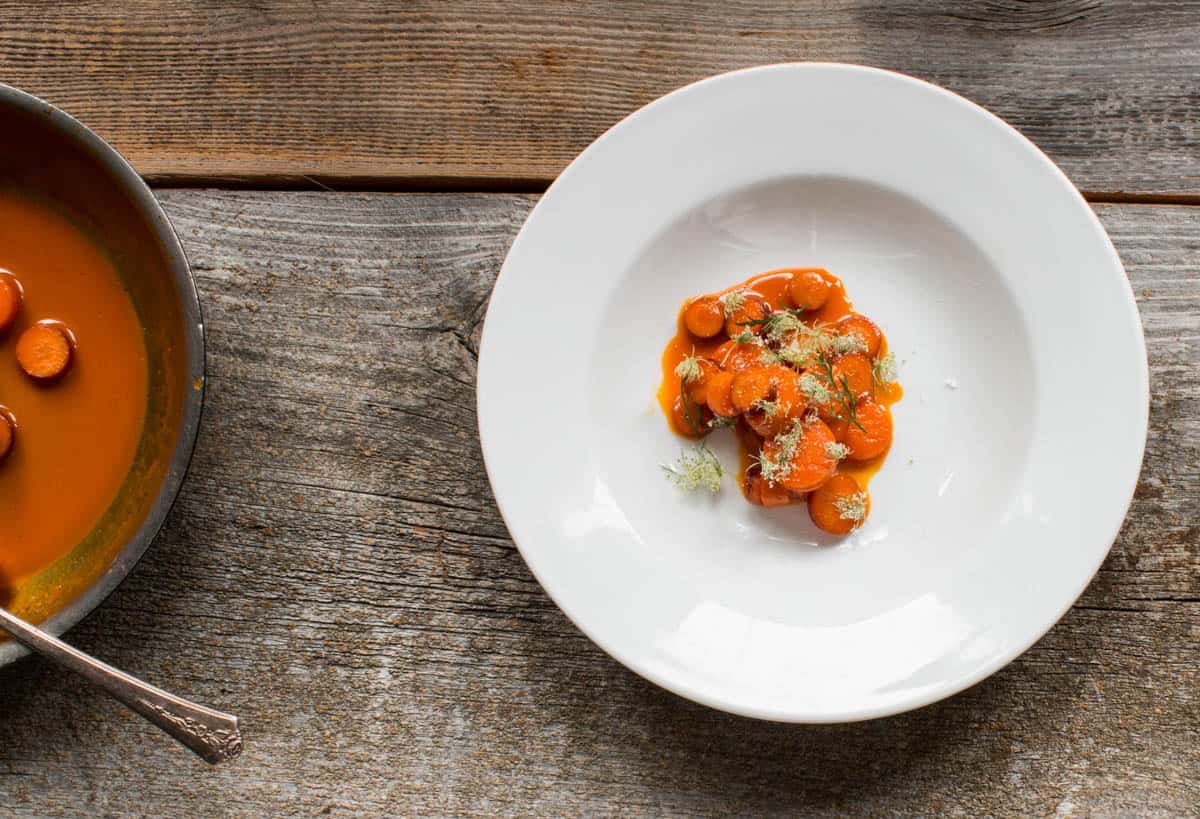
Carrots Glazed in Carrot Juice
Equipment
- 1 small sauce pan
Ingredients
- 2 cups carrot juice
- 2 tablespoons unsalted butter *see note
- Kosher salt to taste
- Wild carrot seeds optional, you can substitute a teaspoon of chopped fresh tarragon.
- 4 cups carrots sliced medium-thick, about ¼-1/2 inch
- Dash of fresh lemon juice
- fresh grated orange zest to taste
Instructions
- Put the carrots in a wide pan with a fingers width of water and a good pinch of salt. Bring the mixture to a simmer, covered, then cook until the carrots are just tender. Discard the water, then add the carrot juice and turn the heat up to high, rapidly reducing the sauce.
- Add the butter to the pan and stir, swirling the pan to emulsify the butter and make a thick glaze, season with the dash of lemon juice. Season the carrots to taste with salt, and a scrape or two of orange zest to taste. Transfer to a serving dish, sprinkle with the carrot flowers and seeds if using and serve immediately.

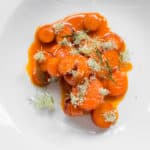
Jacqui
And to add to this. In the extended quest for spice cake that a locavore would eat, last week during our holidays in northern Denmark I made a carrot cake spiced with carrot seeds, spruce syrup and sweet gale cones. Not bad at all. I brought home a handful of sweet gale cones that I popped in the freezer for later.
Jacqui
Just to add an additional "warning" (I put it on the instagram post of the wild carrot flowers too), (Wild) Carrot seed is a powerful emmenagogue. "Witches" have been using this to induce early term abortions forever, and people still use it today. And it works. Of course many of the Apiaceae (hogweed, parsley, parsnip, angelica, and other plants, like juniper, some mints like pennyroyal etc etc) have similar effects but for carrot even a quite small amount is an effective dose. If this interests you, a great reference is the book "Eve's Herbs" by John Riddle.
One of my friends recently proposed the experiment to his female colleagues when he found carrot sprouts at his local market. All the women who ate what would be considered a normal serving of sprouts was menstruating within two days. So be careful to whom you offer a dish spiced with carrot seeds...
I decided not to make carrot syrups for the restaurant I supply for just that reason because menu warnings can be off-putting.
Alan Bergo
Thanks Jacqui, that's great advice. I know a number of chefs who do cook with these, and Sean Brock's book "Heritage" is where I first thought of cooking with them. He makes bitters though. An infusion, further diluted with liquid, and not containing the seeds themselves as I do here is obviously different animal, and should be a much lower dose. Really interesting about the carrot sprout experiment, I'm assuming they contain the seeds in the sprouts, per your typical bean sprouts? Can't ever say I've seen carrot sprouts at a market like that, but I'd definitely try.
Jacqui
yup, sprouted seeds, like alfalfa sprouts. A couple of tablespoons was enough.I have also never seen carrot sprouts, but apparently the Montpellier (France) market has/had a very creative sprout stand.
I made braised carrots with wild carrot seeds and flowers the other day, but i checked that none of the women present was trying to be pregnant...
Ron
It should be noted that people should not forage for wild carrots unless they know what they are looking for. Poison hemlock looks very similar and is no bueno.
Alan Bergo
You're absolutely right!
Dan F
I should add that cooking carrots in their juice had become a favorite, too. The reduced carrot juice makes an excellent sauce, as well. Plus, I can see in the dark reeealy reeeeealy well now!
Dan F
Wow!! Why aren't wild carrot seeds considered a spice? I just stopped along the roadside while on a drive around Lake Pepin and spotted some wild carrot blossoms that had gone to seed. Put one in my mouth and bit down... OMG! Not like a carrot at all, though. Reminds me more of rosemary, or even spruce tree gum. Very powerful, but delicious!